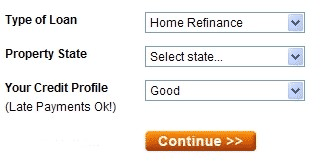30 Year Mortgage Rates Not Tied To Fed
30 year mortgage rates drop when the fed cuts rates. Right? Most consumers think just that when they hear in the media the Fed cut interest rates. However, the rate the Fed cuts is the Fed Funds Rate which has nothing directly to do with mortgage rates.
30 Year Mortgage Rates vs. The Fed
The media reports a rate cut and everyone is feverishly out searching for mortgage refinancing rates on the most common program, 30 year mortgage loans.
It very rarely happens that mortgage lenders rates are cut along with the Fed rate…and here’s why.
The Fed Funds rate is the rate commercial banks can borrow money from the Fed. It is a short term lending rate, so it has impact on short term bank lending. For consumers this means any credit cards, car loans, or lines of credit could see an impact to the rate as commercial banks pass through this short term rate by adjusting their Prime Rate.
Long term rates, like 30 year mortgage rates, are not effected directly in this way.
There is no such thing as Federal Reserve mortgage rates. The mortgage market and the Federal Reserve are 2 different things.
Long term mortgage rates are an outgrowth of what’s happening in the bond markets. Meaning mortgage rates ebb and flow with the yields established on longer term investments like the 10 year bond. And sadly, even that is not 100 percent correlated but it’s the best comparative measure we have.
Think of it like this…
A 10 year bond and a Fannie Mae 30 year mortgage (which historically pays off in 7 years) are close in duration, and the Fannie Mae/Freddie Mac version of a mortgage both have the full faith of the government standing behind them. So if you are an institutional investor ( ie. pension fund, hedge fund, insurance company, mutual funds) with tons of cash to invest, you can buy 10 year Treasury bonds or mortgage backed securities which are backed by 30 year mortgage loans.
Since these two investment options compete against one another for investor favor…their yields/rates are tied. The mortgage yield/rate is always slightly higher to offset other risks still inherent in mortgages.
Remember from an investor perspective “rate” is called “yield”, so as an investor you are looking for the better/higher yielding investment. From a consumer standpoint since you are the one paying the yield, you call it rate, and are looking for the opposite.
30 Year Mortgage Rates Drop
For mortgage rates to drop, the competing yield on the 10 year bond has to drop.
As a consumer if you want to know where 30 year mortgage rates are headed, do not listen to Fed rate cut announcements, but look at what the bond market is doing. Bloomberg mortgage rates or any other media report on rates is probably an average and may be a week or so old. However, Bloomberg has the 10 year bond yield scrolling across their ticker every day so you can watch it move in real time.
When the yield on the 10 year drops, most likely 30 year mortgage rates will soon follow.
Good Luck!
Previous Post:« 15 Year Mortgage Rates: Great Idea Unused
Next Post:» Bank Mortgage Rates – Never The Best Deal


Leave a Reply